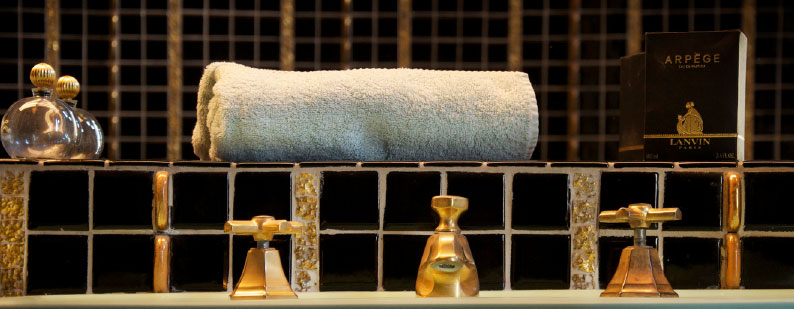
Josephine Baker
Tribute to a great Lady
In 2012 the castle was awarded the title “Maison des Illustres” (House of the Illustrious), a French heritage classification in tribute to one of the most exceptional women of the 20th century. To this day, the castle remains extraordinarily inhabited by the soul of the artist.
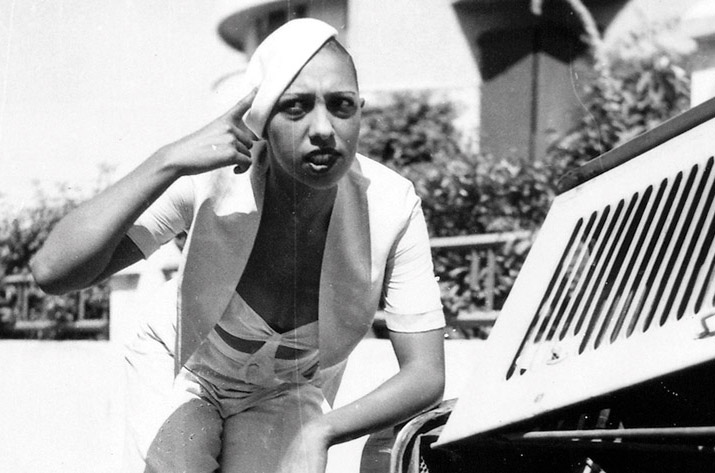
Josephine Baker was born an American on 3 June 1906 in Saint Louis, Missouri, U.S.A.
Her painful childhood in a city marked by racial segregation was the start of her tireless fight for life. She fought racism, fought for freedom, for France, for equality, for love, for her children! How many battles?
A smiling, cheerful little girl, she never stopped achieving her dreams and trying to help others achieve theirs.
A painful heritage
Josephine lived in poverty with her mother, brother and two sisters. At a very young age, her mother placed her with a “white” family so she could work and bring in some money. These periods of deep poverty ended up considerably strengthening the character of the little “Tumpie” who was already looking for ways to leave the family nest.
Passionate about dance, she thought up and organized shows for her friends.
Her plucky personality soon drove her onto the stage. Initially a dresser with the Booker Washington Theatre Company, one day she stood in for a sick dancer and that was the start of a great artistic adventure. At the age of 14yrs, she won her first billing at the Saint Louis Theatre.
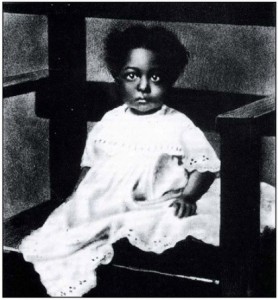
Talent
From the age of 14 to 18 she took on lots of artistic adventures travelling between Chicago and New York.
It was in New York that she was signed up along with all her friends in the troupe, for a big Review in Paris! They embarked for the French capital in 1925 with some trepidation.
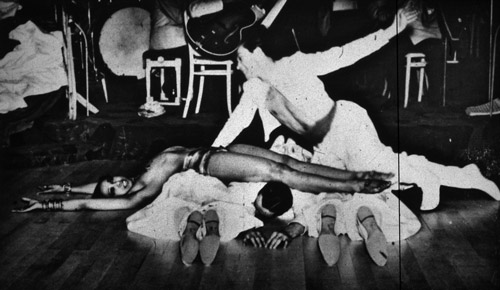
Arrival in Paris
After some hundred performances in France and abroad, Josephine broke her contract and agreed to sign up for the first time ever with the Folies Bergère, for a Review where she played one of the leading roles. In “La Folie du Jour”, she wore pink feathers and a belt made of bananas! You can see the belt displayed in the Château (one of the models of the era).
Josephine devoted 1930 to becoming a singer.
Wanting to be more than just a dancer, she captured Parisian hearts with her famous song “J’ai deux amours » [« I have two loves »]. It was a great success and the money started rolling in. It was in this period that she began to show great generosity (donating to charities, Paris hospitals, schools, and children in particular).
She opened a cabaret “Chez Joséphine » and continued to sign fabulous contracts with Casino de Paris and the Folies Bergère.
Eventually, the most desirable bachelorette in France found her Prince Charming: she married Jean Lion, a Jewish French industrialist, adopting his French nationality in 1938.
Seeing no future together, however, the marriage was short-lived, although it allowed Josephine’s husband and his family to flee to the United States in the early days of the war, Josephine saving them from the death camps.
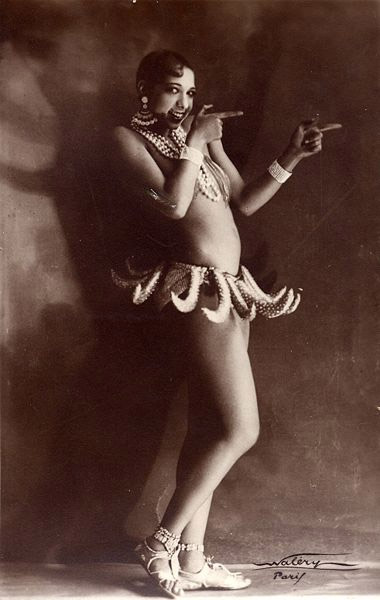
Resistance member and a militant anti-racist
Unfortunately a little-known period of Josephine’s life!
She played an active part in the resistance. A French citizen by her marriage to Jean Lion in 1937, Josephine was recruited in 1939 by the Free French Forces.
She was a cover for Captain Abtey, the head of military counter-espionage in Paris, thanks to her international reputation which allowed to her to move around freely and help refugees leave the country. At official soirees, she became an informant and courier and her music acts also allowed coded messages to be sent. Sent on a mission to Morocco, she entertained French and Allied troops stationed in North Africa, singing for free despite serious health problems.
Devoted to France, Josephine declared: « It’s France that has made me. I’m prepared to give it my life. You can use me as you will. »
Josephine fought for France on many occasions, risking her own life.
It was not until 1961 that she was awarded the Legion of Honour by Général Valin – at Château de Milandes.
Josephine took every opportunity and used her fame to fight the racism still omnipresent at the end of the war.
For her, there was only one race: the « human race”.
Feeling impelled by a mission to fight racism, she created her « Global Village” at Château des Milandes and wrote many works, including « Mon Sang dans tes veines » [My Blood in Your Veins], a reflection on the injustice of racial discrimination.

Generous wife and mother
The two shared the same dream to found a “Global Village, the Capital of Universal Fraternity” to show the whole world that children of different nationalities and different religions could live together in peace.
Josephine’s love for children was inexhaustible, to the point that, once back from her tours, she immediately launched into making Milandes a paradise for children in need, and especially those in need of love.
Who could ever refuse her? All her children were adopted, from 1955.
First 2, then 6, then 8, and finally 12 children of different nationalities and religions : Akio (Korean), Janot (Japanese), Jari (Finnish), Luis (Colombian), Marianne and Brahim (North African), Moïse (Jewish French), Jean-Claude and Noël (French), Koffi (Ivory Coast), Mara (Venezuelan), and Stellina (Moroccan).
Her children together formed the « Rainbow Tribe », all for one and one for all, come what may.
Initially, things went well: every child had everything it needed, was spoiled by a nurse, dressed like little angels, living in a plush, peaceful and loving environment.
Akio remembers magical Christmases, the Château too small to accommodate all their friends and presents, a massive Christmas tree in the master hall.
Josephine created a school catchment for her children and those in neighbouring areas. They went to Castelnaud School but at the Château a tutor also taught them the culture of their country.
The 1950s were very happy years for the whole tribe, with an attentive father and mother.
Jo Bouillon was tasked with running the fabulous Milandes tourist complex, and strove to contain the star’s increasingly unrealistic ambitions.
Unfortunately, the foreseeable seeds of failure put an end to the happiness. Too generous and certainly too naive, Josephine was useless at managing a business.
In addition to a tendency to overspend, due to her tough life, Josephine was defrauded by unscrupulous contractors making her pay the same bills many times over – plus her limitless generosity – pushing her into heavy debt.
When Jo Bouillon left Milandes for other horizons, he left Josephine crippled by debt but still determined to continue her Global Village!
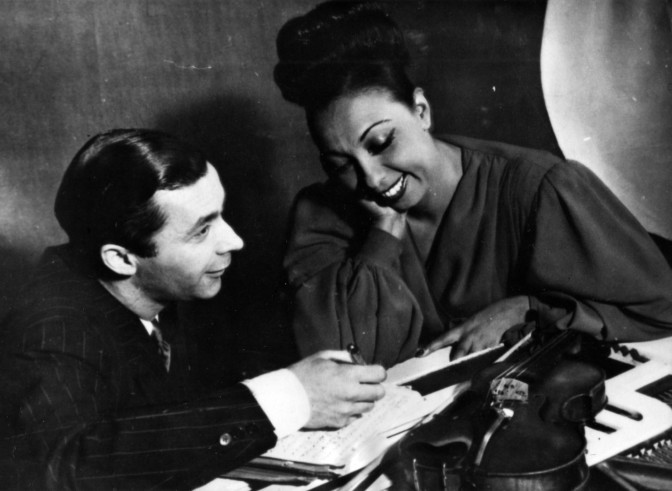
A tragic end but a glorious soul
In 1968 the Château was again put into administration to be sold to the highest bidder. Josephine was on tour when she learned that the new owner had put the property up for investment. So she decided to lay siege to the Château and barricaded herself in the kitchen.
Unfortunately, the new owner’s henchmen had no scruples and booted her out of the property. Weakened and in shock, she was taken to Périgord hospital.
This tragic episode made a lasting impression on the artist, who declared that France had let her down.
At the age of 62 she settled in Roque Brune on the Côte d’Azur with the help of Princess Grace of Monaco.
To pay off her debts, Josephine went back on stage. In 1974, in recognition of her 54-year career, André Levasseur offered her a lifetime membership in the Sporting Club of Monaco.
The Red Cross Ball organized for the Principality of Monaco allowed Josephine Baker to regain her status as a star.
The show was put on at the Bobino Theater in Paris and was a great hit. It traced her entire career as an artist, the good times as well as bad.
But the triumph did not last, Josephine was exhausted.
After a few performances, she was found unresponsive in her apartment in Paris. Moved urgently to Salpetrière, she was pronounced dead at 5:30am on 12 April 1975 from a cerebral hemorrhage.
Her funeral was held at La Madeleine on 15 April 1975 and she was buried in Monaco. Princess Grace of Monaco arranged for her to be moved to a burial vault on 2 October 1975.
In 1975, with the eldest Bouillon sibling 21 years old, some of the children decided to join their father in Argentina, the others remaining in Paris and sharing an apartment with Jo Bouillon’s niece.
The now 11 children, after the death of Moïse, occasionally return to Milandes with always an unforgettable memory of their mother.
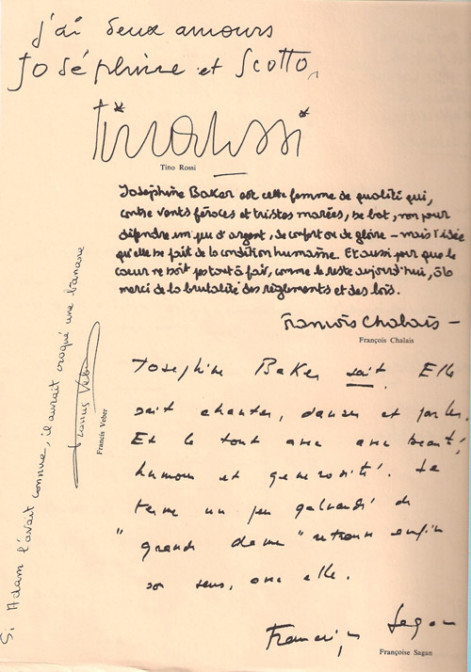
2021 : Josephine Baker enters the pantheon !
The inscription “To great men (and great women), the grateful homeland” echoes her numerous commitments, either during the second world war or for her fight again racism.
Josephine Baker used to say: “each man may don’t have the same colour, language, or customs but they have the same heart, blood, and need for love”. This sentence conveys to itself the commitment and values of an artist that spent her whole life fighting for universalism, difference, and personal liberties no matter the skin colour or origins.
Dedicated to her cause, she managed to make her voice heard without looking for any reward or glory. She loved France, this country that adopted her and is now thanking her for her acts of bravery and her universal fight!
Josephine Baker always fought FOR something and not AGAINST anything. We are glad to carry her values on and pass them on to the new generations that will carry on her fight.
Her famous song “J’ai deux amours: mon pays est Paris » echoes in everyone’s mind because it shows all of Josephine’s love. But when you see her cenotaph heading to the Pantheon, carried by air force soldiers, you can think about the song “Me revoilà Paris” in which the artist doesn’t only come back with “her music and dances” but with her “love, understanding and tolerance” like her daughter, Marianne, said.
The cenotaph contains some soil of places that have a symbolic resonance for Josephine Baker: Saint-Louis, USA where she was born, The Milandes where she has lived 30 years and Monaco, her final resting.
Part of presidential speech by Emmanuel Macron
Josephine Baker
You are entering this Pantheon blowing with you a bold and whimsical wind. Yes, for the first time in this place, it is also a certain idea of celebration that enters it.
You are entering this Pantheon because you loved France, because you have led her to the way that was her true one, but she was yet doubting.
You are entering this Panthéon because although you were born American there is no one more French than you.
And until the end of your career, adapting the lyrics of your biggest hit, you were proclaiming “Mon pays c’est Paris).
Each of us tonight is whispering this chorus sounding like a love anthem: “Ma France’ c’est Josephine”.

